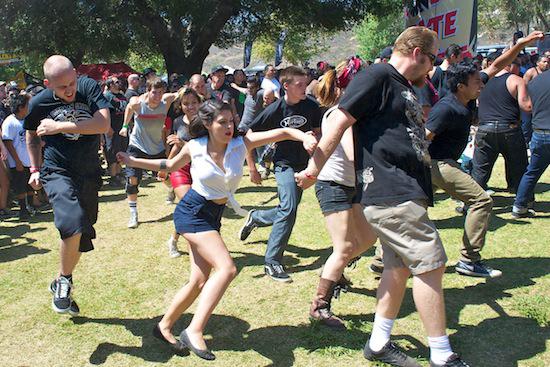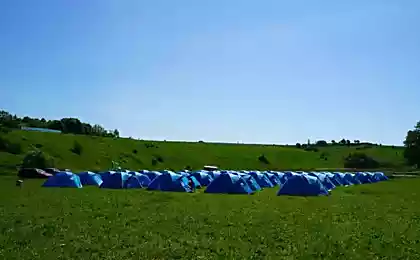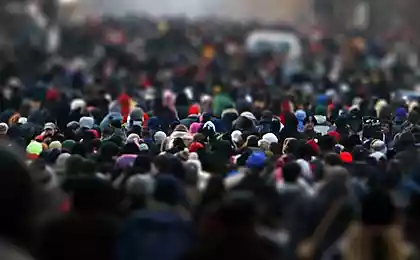541
Crowds in extreme conditions mimic the natural forces of nature

People gathering in large groups tend to behave like uncontrollable forces of nature. Most often it manifests itself in extreme situations - earthquakes, public disorder or at rock concerts. Researchers found that people in such cases, unwittingly mimic molecules of gas, flocks of birds or fish, without controlling their actions. And sometimes it all just looks like chaos, but in fact it is not.
Scientists believe that a person's behavior in a large crowd in a critical situation can be described in terms of physics. For example, during a rock concert crowd of people moving in random order with loud rhythmic music, pushing each other, and sometimes transporting one person at the hands of the entire crowd. A group of students in physics at Cornell University in Ithaca, New York, created a computer model taking rock concerts on YouTube as a template and the crowd spread out into individual particles in the program using automated tracking methods.
On the basis of these data, scientists have deduced two basic types of human behavior. The most active constantly huddled in small groups and follow their neighbors - just behaving fish, going to schools. Passive is standing in one place, perfectly normal response when the "active" clashed with them, and remained in the same place after their departure.
The more "active" is collected in one place, the faster they form the so-called slam - formed following the crowd in front of the stage. Slam appear spontaneously, one that does not control. The researchers said they were able to find a pattern and, therefore, to develop methods for how to behave during the protests, riots and panic, if you were in the crowd.
via factroom.ru
In fact, you can see more than half of the moon
Since 1985, the year the first line of world music charts has not got any instrumental composition























